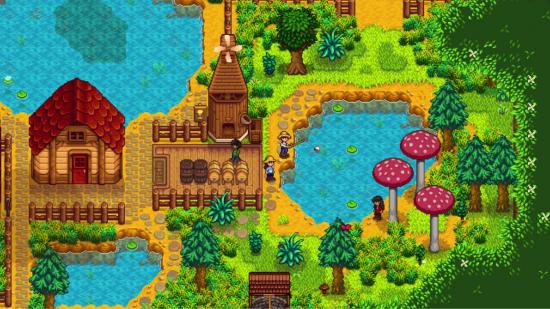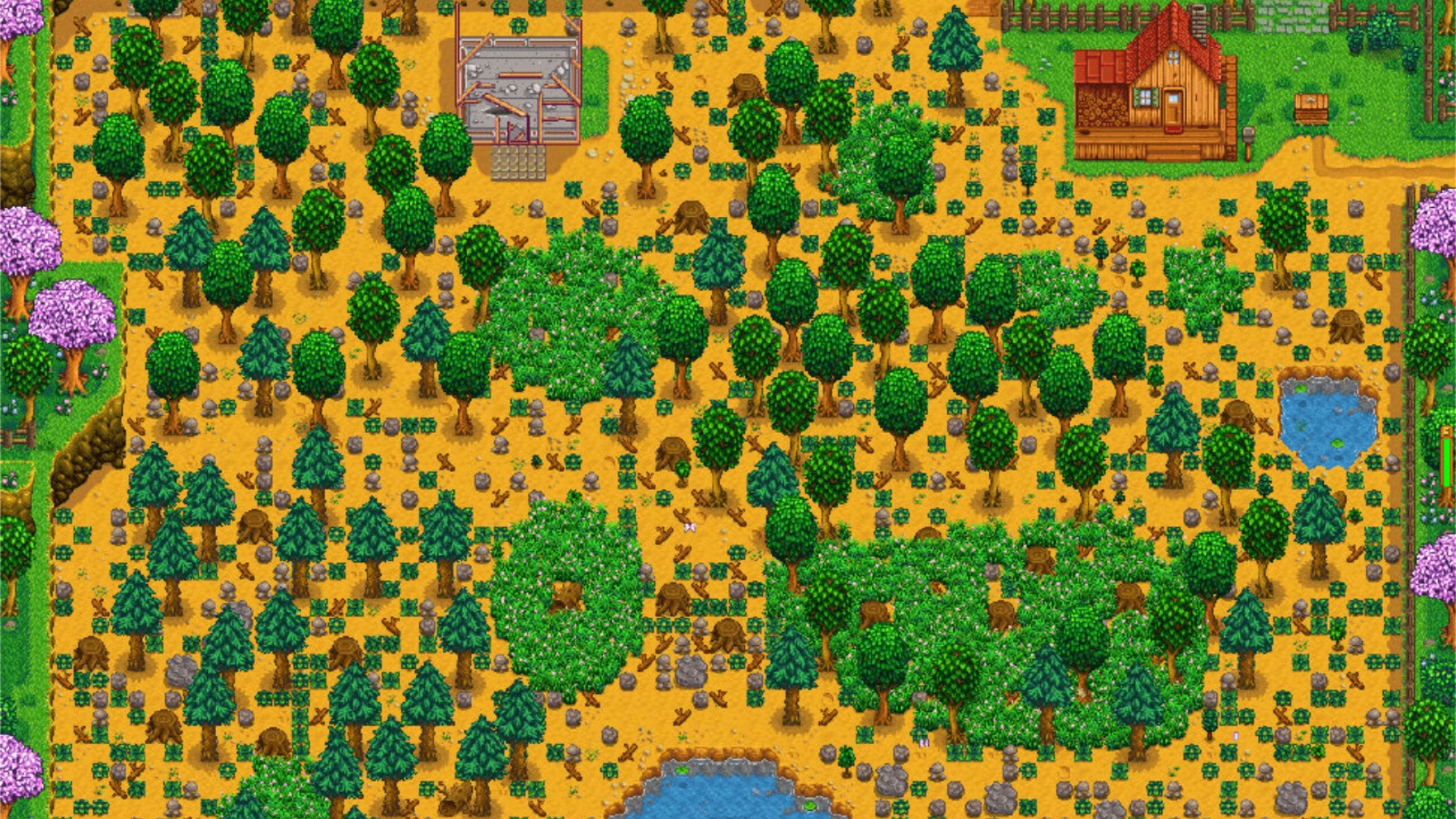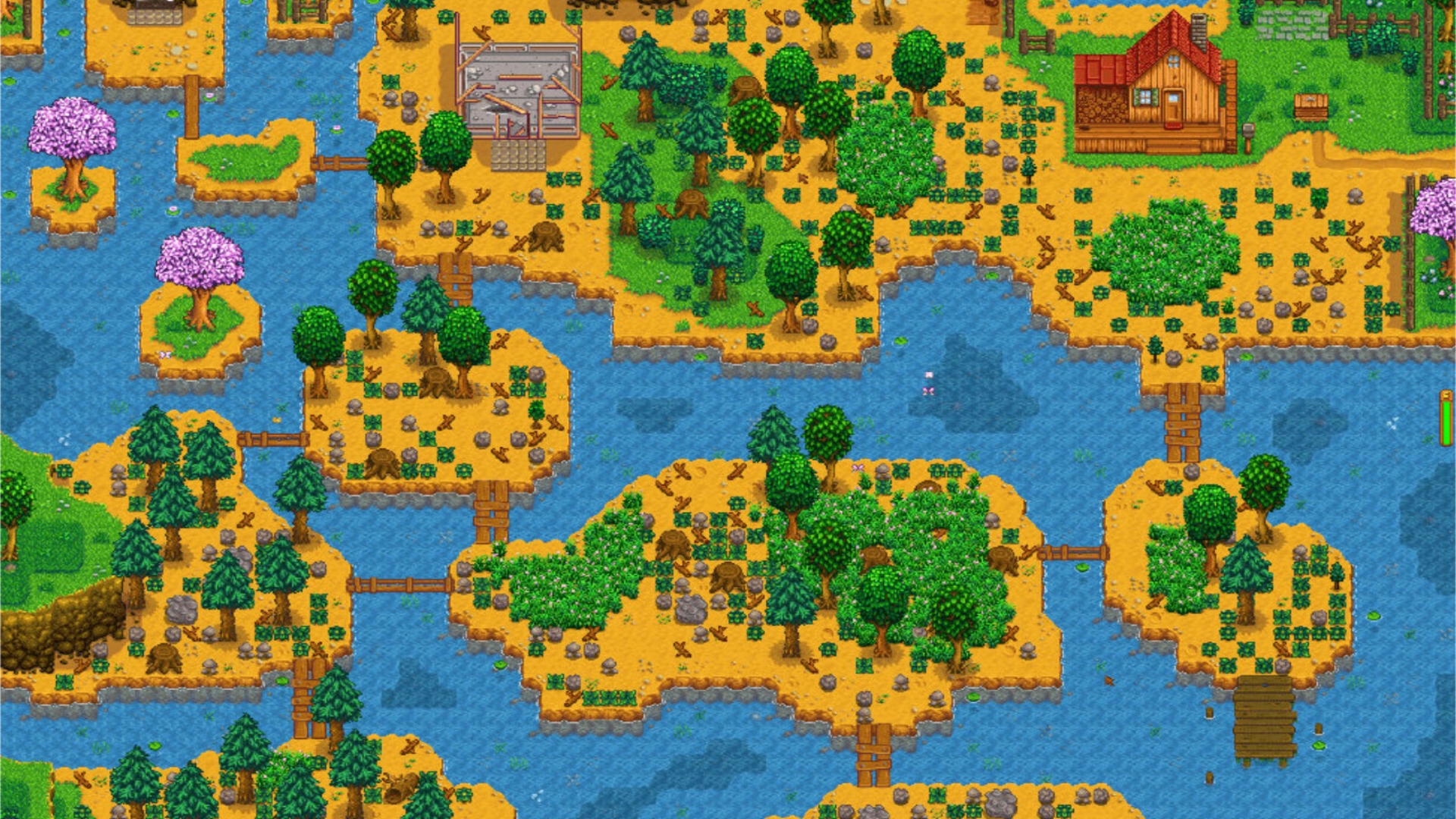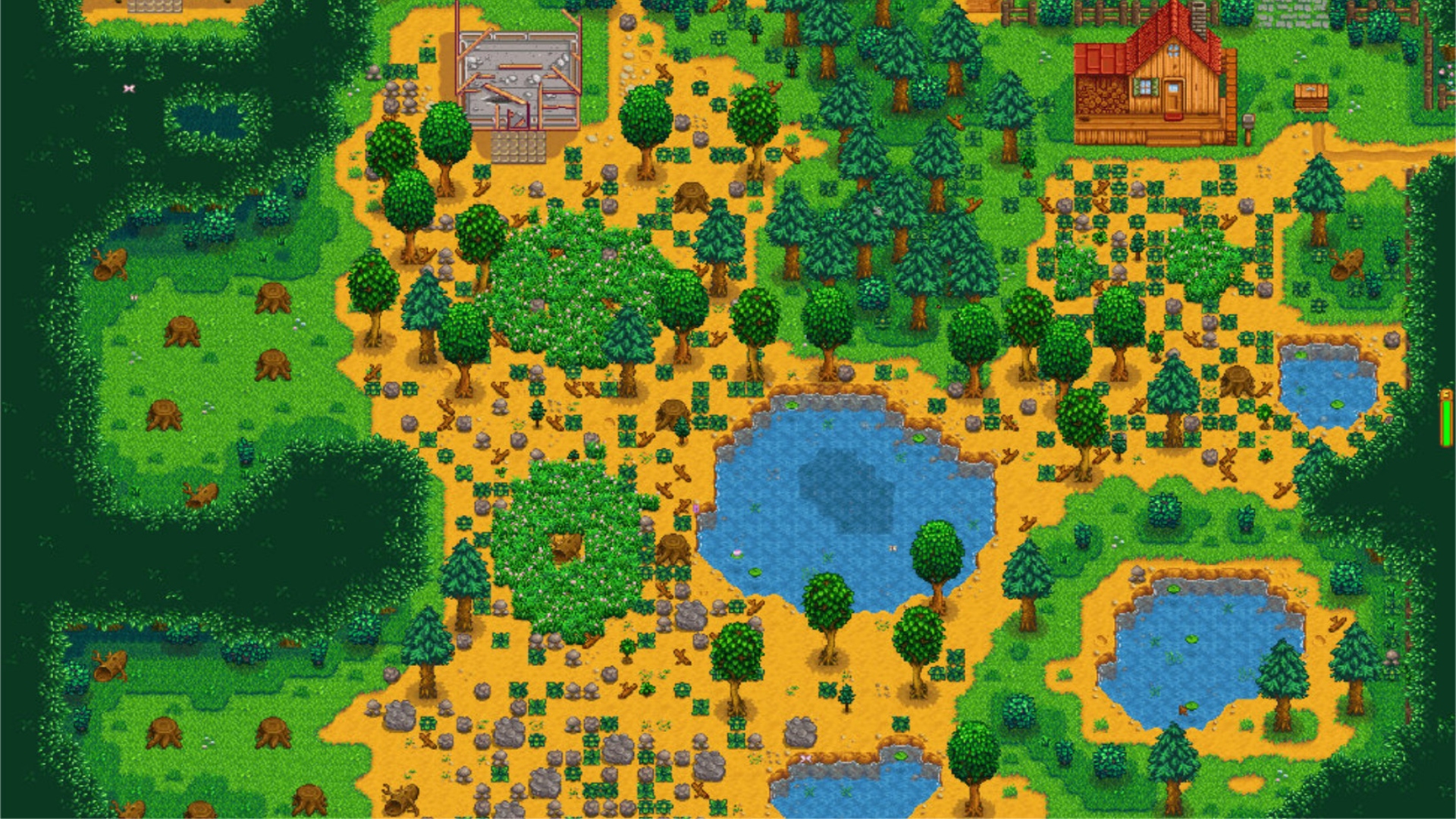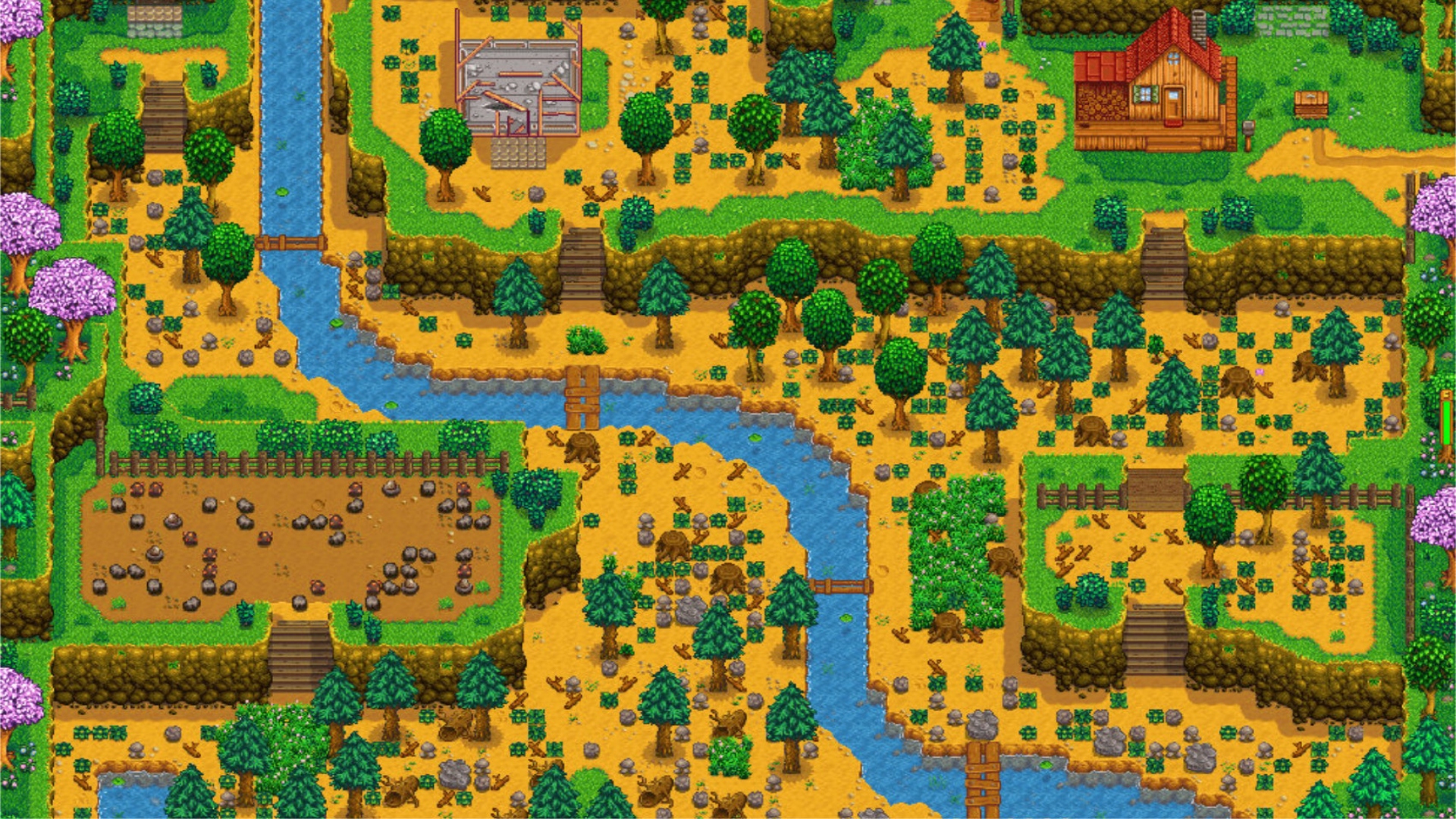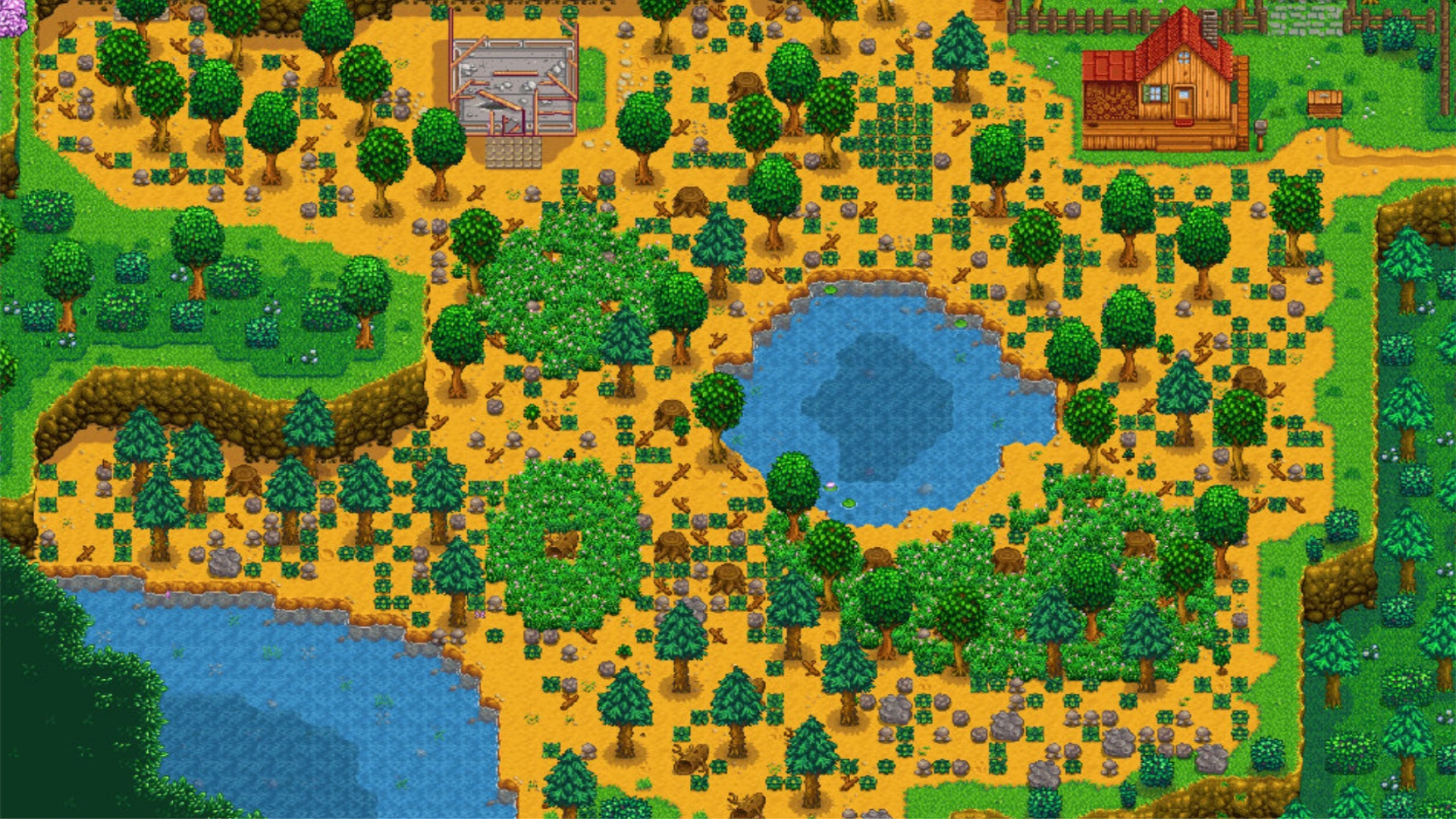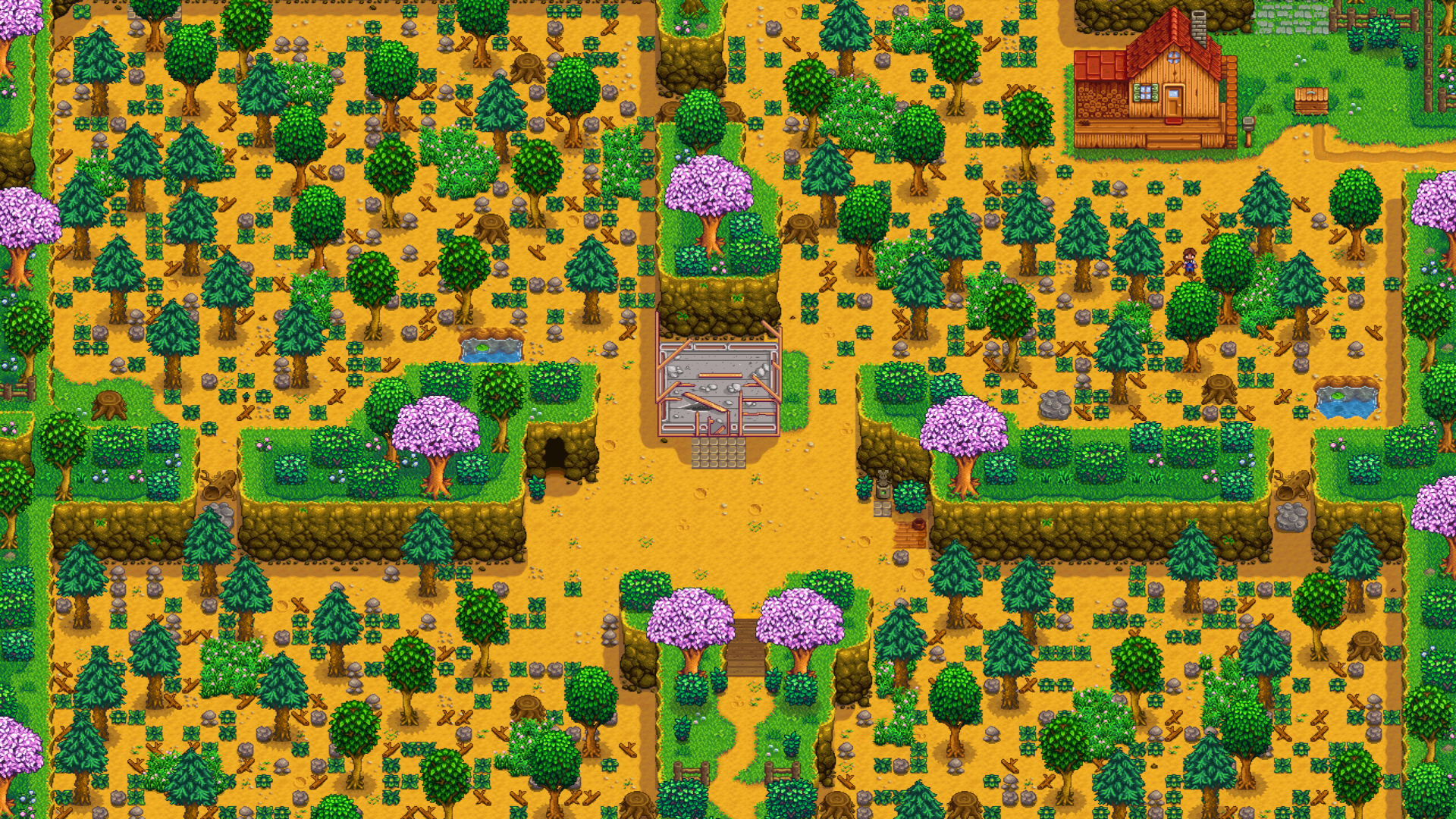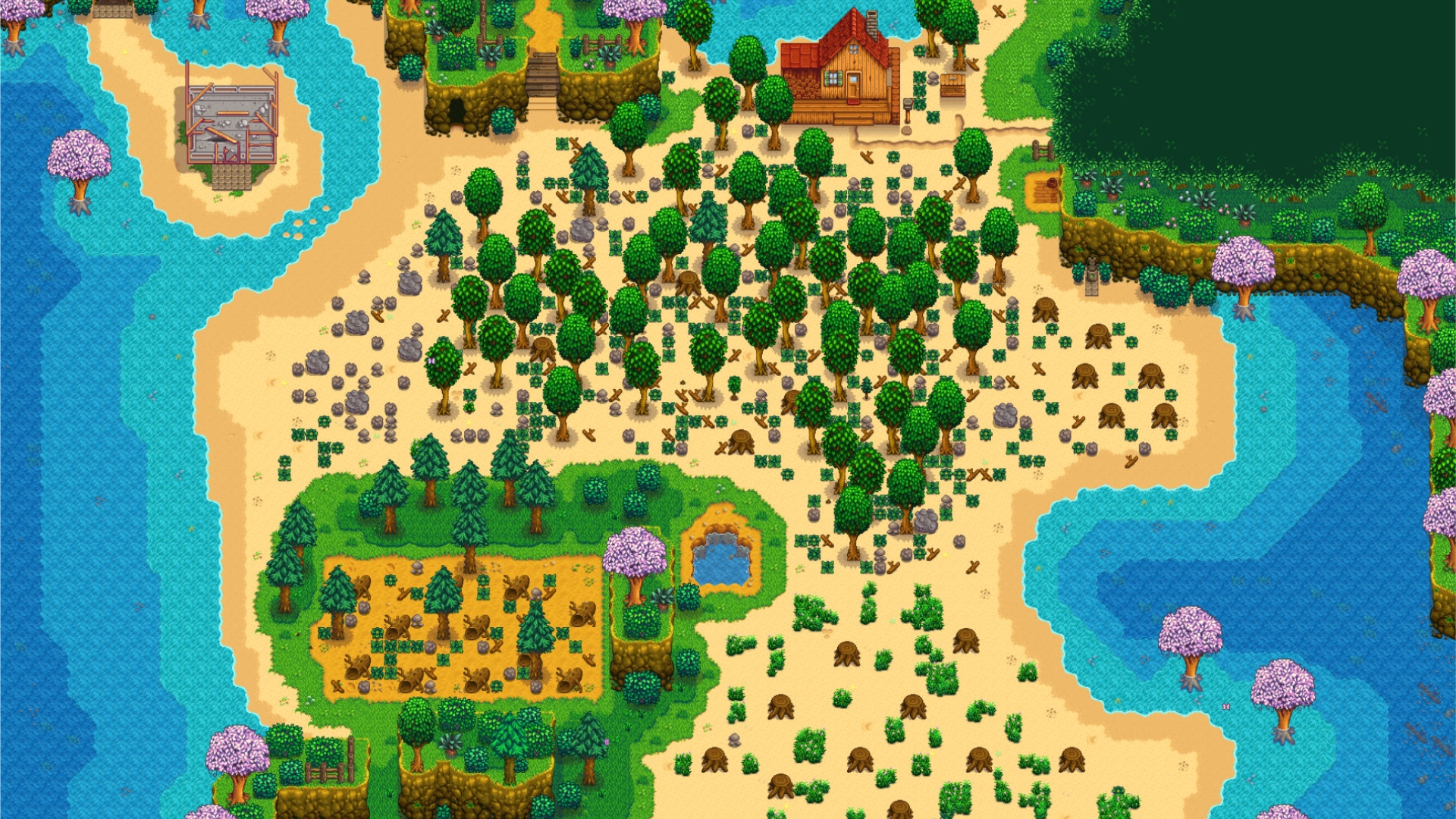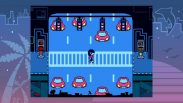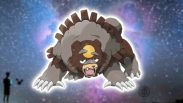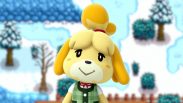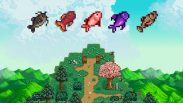Choosing a map to begin your new life on is a daunting choice in any game, especially Stardew Valley. There are several available Stardew Valley farm layout options, all of which have unique traits and aspects that suit certain playstyles more than others. All areas offer a certain amount of farmland, though depending on which locations you choose, there could be much more or less available area. One map has a focus on combat, one favors the fisher, while another takes a bit of everything and throws it into one.
If you find this guide helpful, then you might want to check out our other Stardew Valley content, too, including a Stardew Valley fish list, as well as guides on Stardew Valley’s Lewis and Stardew Valley’s Sebastian, detailing their likes, dislikes, and gifts.
Now without any further delay, let’s get into all Stardew Valley farm layouts and how to use them.
Stardew Valley standard farm layout
If you’re after a nice bit of land that’s ideal for both crops and animals, you needn’t look any further than the standard farm map. Essentially, you treat this as your average farm. You have 3,427 tillable tiles at your disposal, as well as 235 buildable tiles, though these are non-tillable. In terms of viable skills, the standard farm encourages farming.
This is the one we’d recommend during your first playthrough. You’ll have plenty of space for crops and raising animals, unlike other maps. Oh, and there are plenty of resources at your disposal – just look at all those trees. However, do bear in mind that this comes at the cost of special perks that you can find on other farm maps.
There are multiple farm layouts to consider for this map. However, we suggest taking the spacious route, you can fit animals, crops, and everything else you need in the space. If somewhere down the line you decide to add more buildings, you have the room to do so.
Stardew Valley riverland farm layout
As the name may indicate, water covers the majority of this land. Due to how much water surrounds the riverland map, your available farming land is cut, so this is an ideal Stardew Valley fishing farm layout for you eager anglers out there. There are 1,578 tillable tiles on this map and 516 buildable tiles.
When you go fishing, the majority of your catches – 70% to be precise – will be fish that are typically found in Pelican Town river – like rainbow trout, salmon, and lingcod. The remaining 30% are pond fish – such as smallmouth bass, perch, and pike – that you can find in Cindersap Forest.
Given that the riverland farm layout limits its land space, we recommend placing crops and trees on individual islands. The larger pieces of land are great for buildings, and you can plant additional crops nearby, giving quick access to shipping crates.
Stardew Valley forest farm layout
Trees and foliage surround your land in the forest map, making it an ideal Stardew Valley foraging farm layout. There are many bushes, some of which provide you with berries. All in all, you have 1,413 tillable tiles to play with and 1,490 non-tillable, but build-able, tiles. Moreover, there are eight clearings on the Western side of the map that spawn large renewable stumps, and unique weeds that drop mixed seeds, without fail. These clearings can also generate seasonal forage items, which are as follows:
- Spring – wild horseradish, leek, morel, and dandelion
- Summer – grape, spice berry, sweet pea, and common mushroom
- Fall – common mushroom, red mushroom, purple mushroom, and chanterelle
Each of the seasonal forage items has a 25% chance of dropping. If you enjoy it, this could be the map for you, given foraging is a viable skill for this land.
Of course, you can also fish here, though your chances of catching trash rather than an actual fish sits at 50%. Meanwhile, 5% of the time, you can catch the elusive Woodskip, the other 45% tend to be pond fish – such as Smallmouth Bass, Walleye, and Perch – the ones you find in Cindersap Forest.
Stardew Valley hilltop farm layout
On the hilltop farm map, you have 1,648 tillable tiles, while a further 930 are non-tillable but buildable. Depending on your level, the Southwest hilltop will spawn stones, ore, and geodes. However, do be aware that large stumps, large logs, and boulders can block your path, and you must use the correct tool to get past them. As you may have guessed, mining is an essential skill for this land.
Thanks to the stream that runs through the map, you can go out there and catch some fish – 50% of the time, at least. Sometimes you will find trash, but when you do get lucky, you will find fish caught in the Cindersap Forest river, including rainbow trout, catfish, and pike.
As for a layout for this type of farm, we suggest placing sheds upon the southwest hilltop, leaving just enough room for nodes to spawn. Elsewhere, in the bottom left of the map, you will find plenty of room to grow some crops.
Stardew Valley wilderness farm layout
Do you prefer combat to farming? If so, the wilderness farm could be for you. At night, you come face to face with monsters, which spawn, and scale, with your level. Oh, and one of these enemies is the Wilderness Golem, which spawns more often here than on any other map. Unsurprisingly, the viable skill for a wilderness farm is combat.
There are a couple of places to fish here, though you have a 65% chance of reeling in trash. The remaining 35% sees you catch fish found in the mountain lake. Due to the available ponds, and surrounding cliffs, your farmland is smaller. However, you do have 2,131 tillable tiles, and 444 non-tillable, but buildable tiles. In theory, this means you have plenty of space for buildings, but don’t forget the unwanted visitors this farm gets.
If you’re looking for a peaceful farm, where you have plenty of room for crops and animals, this place isn’t for you. Much of your time is taken up by monsters. You would do well to have your crops spread out, though do keep some near your house.
Stardew Valley four corners farm layout
This is a unique map in that – as the name suggests – it’s split into four portions, each one reminiscent of a different location. As a result, the four corners map is a land that you shouldn’t tackle alone but with friends. Additionally, due to the differing terrain, a variety of skills are necessary. Overall, there are 2,952 tillable tiles on this map.
So, the top left corner of this map is the forest farm, where you can find some weeds that drop unique seeds. Meanwhile, the top right corner is the standard farm – a nice little area for some farming. If you fancy a bit of fishing, the bottom left portion of the map is the place to go. Finally, the bottom right corner is like hilltop farm. Here you find ore and geode nodes, though this depends on your level.
Stardew Valley beach farm layout
Who doesn’t love the beach? They are gorgeous locations, and the one in Stardew Valley is no exception. However, let us say this straight away: we don’t recommend this farm to first-time players. If you’re new to Stardew Valley, we suggest checking out one of the maps above instead – perhaps the standard map while you get a feel for the game.
When you set up shop on the beach map, you’ll notice foraging and fishing are the primary skills you need. After all, a beach is an ideal place for foraging and most certainly fishing.
The majority of the time – 52.73% – you will catch ocean fish such as Pufferfish, Red Mullet, and more. 15% of the time, you will receive Seaweed, while 5.1% of the time, you will catch a Mussel, Cockle, Coral, or Oyster. Do be prepared to find trash from time to time, however.
Is there a Stardew Valley farm layout planner?
If you’re looking to plan out your farm before you start building, or simply in search of some ideas, this Stardew Valley planner is perfect for you. By clicking the ‘start planning’ button, you’ll be taken to a farm map render, where you can place buildings and set up your ideal home. You can also check out designs other players have put together for a spot of inspiration.
There you have it, that’s all you need to know to make a start on your new farm. If you enjoy Stardew Valley, but would like to try your hand at something different, head over to our guide on the best Switch RPGs, you never know what you might find.
